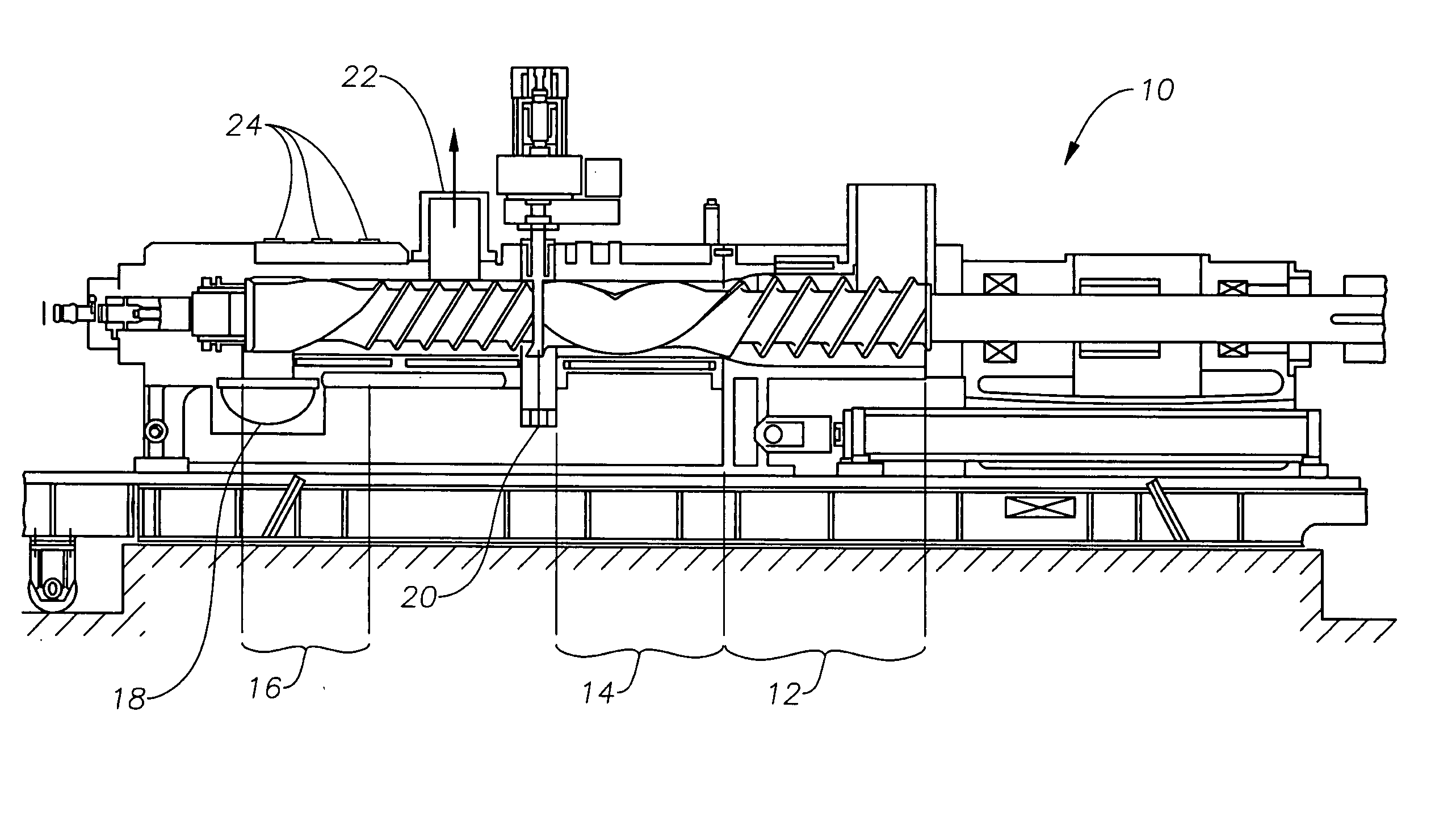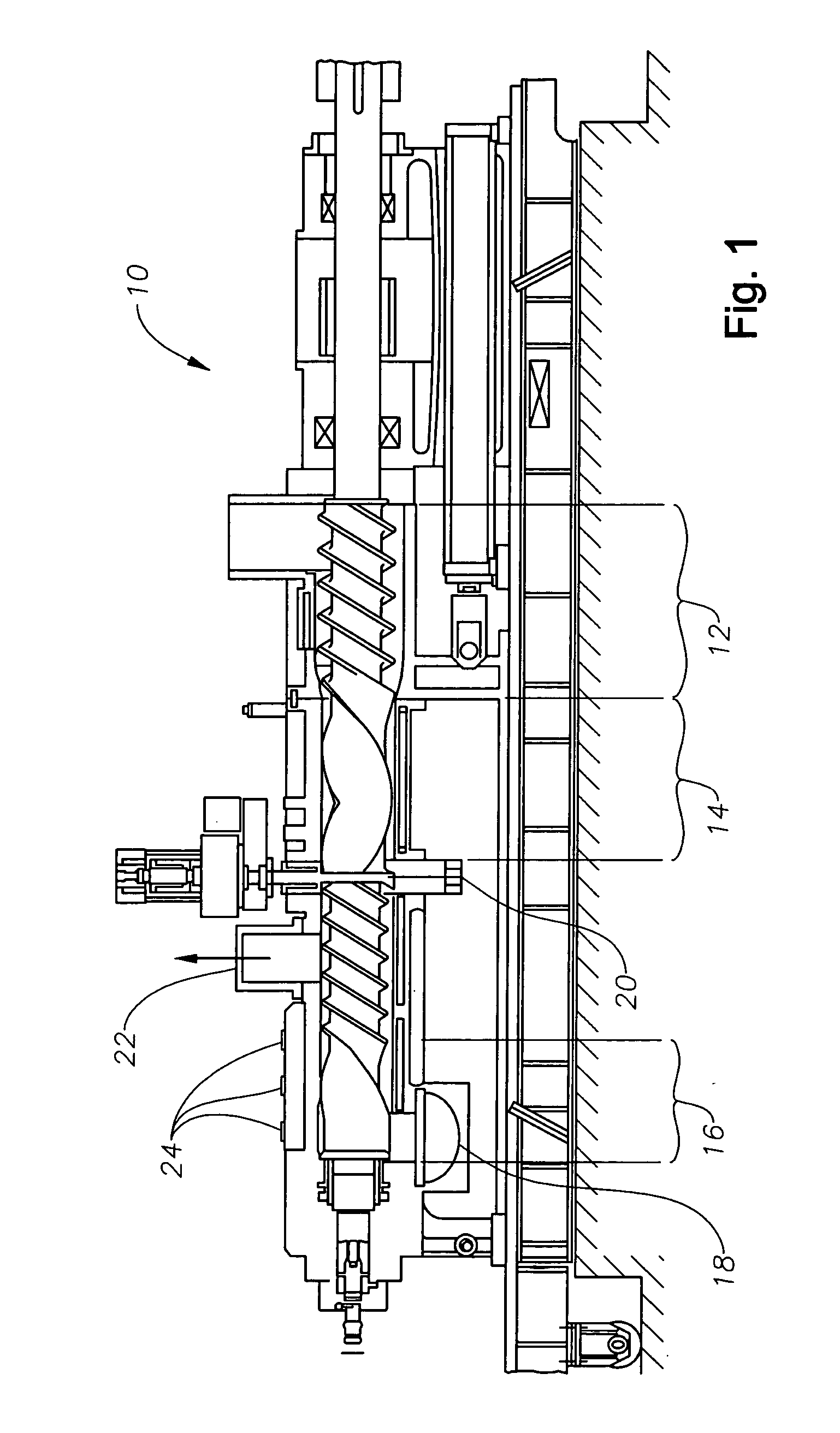Oxygen tailoring of polyethylene resins
a polyethylene resin and oxygen tailoring technology, applied in the field of extruding polyethylene homopolymer and copolymer resins, can solve the problems of insufficient gauge uniformity and bubble stability of medium density polyethylene (mdpe) resins and high density polyethylene (hdpe) resins for producing thin films, and achieve the effect of improving bubble stability and gauge uniformity
- Summary
- Abstract
- Description
- Claims
- Application Information
AI Technical Summary
Benefits of technology
Problems solved by technology
Method used
Image
Examples
examples
[0026] Film gauge was measured according to ASTM D374-94 Method C.
[0027] Film gauge variation was determined using a Measuretech Series 200 instrument. This instrument measures film thickness using a capacitance gauge. For each film sample, ten film thickness datapoints are measured per inch of film as the film is passed through the gauge in a transverse direction. Three film samples were used to determine the gauge variation. The gauge variation was determined by dividing the full range of film thickness (maximum minus minimum) by the average thickness, and dividing the result by two. The gauge variation is presented as a percentage change around the average.
[0028] Dart Drop Impact values were measured using the procedures in ASTM D1709-98 Method A, except that the film gauge was measured according to ASTM D374-94 Method C.
[0029] Elmendorf Tear strength (machine direction, “MD”, and transverse direction, “TD”) were measured using the procedures in ASTM D1922-94a, except that the...
examples 1-4
[0037] A medium density polyethylene (MDPE) bimodal resin was produced using a bimetallic catalyst in a single gas phase fluidized-bed reactor. The bimetallic catalyst was a Ziegler-Natta / Metallocene catalyst as described in U.S. Pat. No. 6,403,181. The resin had a density of 0.938 g / cm3, a melt index I2.16 of 0.07 dg / min, a flow index I21.6 of 6.42 dg / min, and an MFR (I21.6 / I2.16) of 92. Oxygen tailoring of the bimodal resin was carried out on a 4 inch (10 cm) diameter Farrel 4LMSD compounder. The Farrel 4LMSD compounder has a 5 L / D rotor. Referring now to FIG. 2, an oxygen / nitrogen gas mixture (21% O2 by volume) was added at a flow rate of 10 standard ft3 / hr (0.3 m3 / hr) in the melt-conveying zone 36 at 0.5 L / D from the end of the rotor. Optionally, a flow dam can be inserted at about 1.0 L / D 40 from the machine discharge end, and oxygen is injected after the flow dam in the melt conveying zone 36. Several samples of resin were thus processed at different melt temperatures.
[0038] ...
examples 5-9
[0040] A high density polyethylene (HDPE) bimodal resin was produced using a bimetallic catalyst in a single gas phase fluidized-bed reactor. The bimetallic catalyst was a Ziegler-Natta / Metallocene catalyst as described in U.S. Pat. No. 6,403,181. The resin had a density of 0.946 g / cm3, a melt index I2.16 of 0.066 dg / min, a flow index I21.6 of 5.81 dg / min, and an MFR (I21.6 / I2.16) of 88. Oxygen tailoring of the bimodal resin was carried out as described above. Several samples of resin were thus processed at different melt temperatures. Monolayer cast films were produced from the tailored resins as described above. These Examples are summarized in Table 2.
TABLE 2BaseExample No.Resin56789Compounding ConditionsFlow Dam at 4th Segment ofnonoNoyesyesMixerSEI,(a) actual (hp · hr / lb,0.115,0.129,0.147,0.131,0.145,kW · hr / kg)0.1890.2120.2420.2150.238O2 level (volume %)2121212121Melt T (° C.)231253281256282Resin CharacteristicsFlow Index, I21.6 (dg / min)5.815.695.465.335.525.38Melt Index, I2...
PUM
| Property | Measurement | Unit |
|---|---|---|
| density | aaaaa | aaaaa |
| density | aaaaa | aaaaa |
| density | aaaaa | aaaaa |
Abstract
Description
Claims
Application Information
 Login to View More
Login to View More - R&D
- Intellectual Property
- Life Sciences
- Materials
- Tech Scout
- Unparalleled Data Quality
- Higher Quality Content
- 60% Fewer Hallucinations
Browse by: Latest US Patents, China's latest patents, Technical Efficacy Thesaurus, Application Domain, Technology Topic, Popular Technical Reports.
© 2025 PatSnap. All rights reserved.Legal|Privacy policy|Modern Slavery Act Transparency Statement|Sitemap|About US| Contact US: help@patsnap.com



